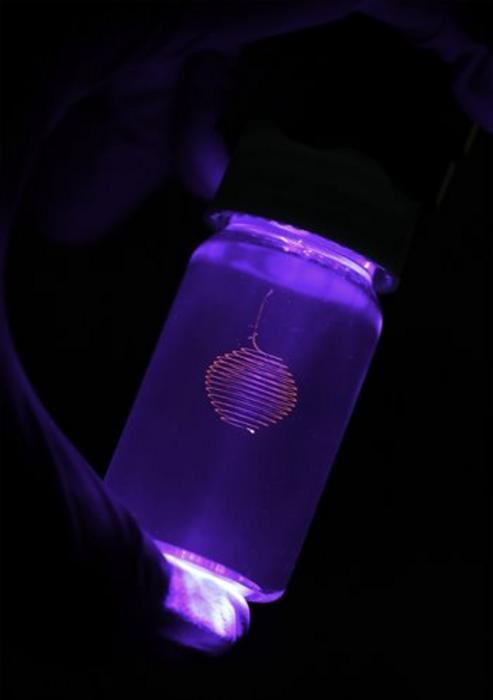A group of researchers at the University of Illinois has announced a method for 3D printing filaments thinner than a red blood cell. Their approach prints hair-like structures, some as slim as 1.5 microns in diameter, inside a gel. By solidifying the printed strands instantly, these scientists have managed to solve problems that usually arise with such fine features.
“In nature, there are many examples of filamentous structures that achieve a diameter of only a few microns,” said doctoral researcher M. Tanver Hossain, who helped develop the special gel used in this process. “We knew it had to be possible.” He explained that traditional 3D printing in open air often fails to produce stable filaments at these tiny scales. Surface tension would usually break them.

Image credit: M. Tanver Hossain – The Grainger College of Engineering at the University of Illinois Urbana-Champaign
Professor Sameh Tawfick, another member of the team, emphasized why this gel-based method can be so effective: “The significance of this method is to produce many geometries of hairs while not having to deal with the downward force of gravity on such fine and flexible hair.” He noted that the gel holds printed material in place, removing the need for temporary support structures that would otherwise be required.
This research also traces its inspiration to nature’s diverse fibers. Professor Randy Ewoldt, who has been examining hagfish slime for years, pointed out that the slime’s strength depends on incredibly thin threads. “This study relates to the broader research vision of my group — to enable novel engineering functionality by using the complex mechanical behavior of non-Newtonian fluids and soft solids,” he said. Hagfish produce unique slime threads, and replicating their micro-scale structure has been a longstanding goal for scientists seeking new materials.
Printed features this small are not easy to make. The group had to design a method of solvent exchange that causes the extruded material to solidify right away, preventing the nozzle from pulling or snapping the filament. First author Dr. Wonsik Eom explained how that works: “This research overcomes a long-standing limitation of 3D printing technology — printing soft materials with a diameter as small as one micron. Achieving such high printing resolution means we now have the technological foundation to mimic the microfibers and hair-like structures found in nature.”
A big bonus is how they can reuse the same gel for multiple prints. The thin filaments cure in place, then the finished piece can be lifted out, leaving the gel intact. The team also printed multiple filaments at once, demonstrating that their approach fits well with faster manufacturing.
What’s next for the researchers? They see real possibilities in combining these threads with materials that might transmit electricity or respond to environmental stimuli. “This method holds significant potential, as ultra-fine and long fibers could be combined with functional materials to enable replication of nature-inspired fibrous structures,” added Hossain.
Dr. Eom, looking ahead, sees applications that stretch beyond current microfabrication limits. “We are particularly interested in printing fine microstructures that cannot be realized today using conventional semiconductor manufacturing techniques,” he stated. The team’s focus goes beyond fiber printing alone — they want a range of shapes and materials, all guided by examples taken from nature’s own designs.
Although no one can predict how soon this process might appear in mainstream 3D printers, the concept signals a shift in how researchers think about microscopic architecture. By letting the gel environment do the heavy lifting, the printer is freed to create shapes that would have been unthinkable using more common strategies. “We adopted embedded 3D printing as a method to mimic these threads,” Eom remarked, “and we discovered that developing high-resolution embedded 3D printing technology enables us to replicate a much wider range of natural structures than we initially expected.”
Citation:
Eom, W., Hossain, M.T., Parasramka, V. et al. Fast 3D printing of fine, continuous, and soft fibers via embedded solvent exchange. Nat Commun 16, 842 (2025). https://doi.org/10.1038/s41467-025-55972-1
